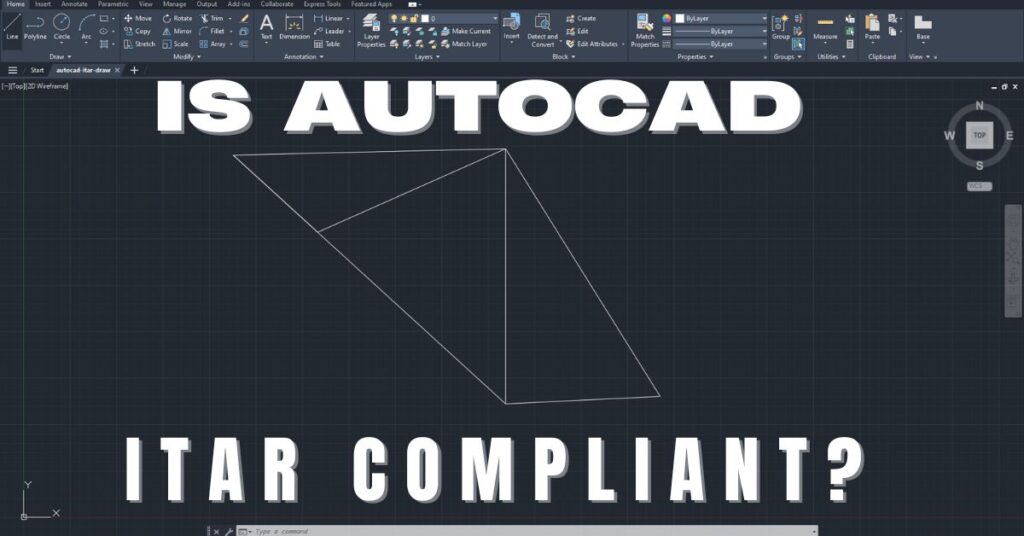How to Avoid Pitfalls in Weapon Exports
Exporting weapons is a challenging and intricate process, one that we’ve seen firsthand through our work with various defense contractors. Over the years, we’ve guided numerous clients through the complexities of exporting defense articles, ensuring they not only comply with traditional regulations but also address the cybersecurity risks that are increasingly intertwined with the export process. In this article, we’ll share insights from our experience to help you avoid the most common pitfalls in weapon exports, with a focus on both compliance and cybersecurity.
Understanding the Regulatory Landscape of Weapons Exports
Working with hundreds of defense contractors over the year, one of the biggest hurdles they faced was understanding the complex web of regulations governing weapon exports. It’s not just about ITAR and EAR—though those are critical—but also about understanding the roles of the ATF, U.S. Customs, and cybersecurity considerations that have become essential in today’s digital age.
International Traffic in Arms Regulations (ITAR)
ITAR was often the first challenge our clients encountered. Administered by the U.S. Department of State, ITAR controls the export and import of defense-related items listed on the United States Munitions List (USML). Ensuring compliance with ITAR is critical, but it’s also essential to protect the sensitive data associated with these defense articles from cyber threats.
Example Experience:
One of our clients, a mid-sized defense contractor, had all their ITAR-controlled data stored on a cloud platform that wasn’t compliant with federal regulations. During a routine audit, it was discovered that their data had been exposed to unauthorized access, putting them at risk of severe penalties. We quickly moved their data to an ITAR-compliant cloud service, implemented strict access controls, and provided cybersecurity training to their staff. This not only helped them avoid legal repercussions but also protected their intellectual property.
If you’re not yet registered with ITAR, you can start the process by visiting the DDTC’s registration page and contacting us for advice.
Export Administration Regulations (EAR)
Another significant challenge is the EAR, administered by the Bureau of Industry and Security (BIS) under the U.S. Department of Commerce. EAR regulates dual-use items that have both civilian and military applications. Many of our clients initially underestimated the importance of EAR, only to discover that their products fell under its jurisdiction.
Example Experience:
A client manufacturing advanced surveillance equipment faced a serious breach when their export control software was hacked, exposing sensitive data to foreign adversaries. This breach not only jeopardized their compliance with EAR but also risked national security. We stepped in to implement advanced cybersecurity measures, including encryption and multi-factor authentication, ensuring that their software met EAR requirements and protected their data from future attacks.
You can learn more about EAR and how to register by visiting the BIS’s website.
Bureau of Alcohol, Tobacco, Firearms, and Explosives (ATF) Regulations
The ATF regulates firearms, ammunition, and explosives—areas where many of our clients were operating. Complying with ATF regulations is critical, especially when it comes to exporting firearms. However, it’s also crucial to secure the digital systems managing these exports against cyber threats.
Example Experience:
One of our clients, a firearms exporter, had their sales and inventory systems compromised by ransomware, which froze their operations and encrypted their data. This not only halted their business but also put them at risk of non-compliance with ATF regulations. We assisted them in recovering their data, implemented strong anti-ransomware defenses, and established a secure, compliant environment for managing their exports.
Form 9 – Application and Permit for Permanent Exportation of Firearms (ATF Form 5320.9)
You can learn more about ATF regulations and begin the registration process by visiting their website.
U.S. Customs and Border Protection (CBP) and International Shipping
Customs and shipping issues often catch our clients by surprise. The role of U.S. Customs and Border Protection in the export process is vital, yet it’s often overlooked. CBP enforces customs laws, ensuring that all exported goods are properly documented and comply with export control laws. In today’s environment, this also means securing the data related to shipments and customs documentation.
Example Experience:
A client’s shipping records, including sensitive customs information, were intercepted by cybercriminals due to inadequate cybersecurity measures in their logistics systems. This breach not only delayed their shipments but also raised compliance concerns with CBP. We worked with them to secure their logistics software, ensuring that all data was encrypted and only accessible to authorized personnel, which brought their operations back into compliance.
More information about CBP exporting
You can find more information on U.S. Customs regulations and processes on the CBP’s official site.
Common Pitfalls in Weapons Exports and How to Avoid Them
Now, let’s dive into some of the most common pitfalls I’ve helped clients navigate in the weapon export process, and how you can avoid them, with an emphasis on the intersection of compliance and cybersecurity.
1. Failure to Classify Weapons Correctly
One of the first issues we often encountered with clients was the incorrect classification of weapons. Misclassification can lead to non-compliance with ITAR, EAR, or ATF regulations, resulting in fines or legal action.
How We Helped Clients Avoid It:
- Understanding the USML and CCL: We always emphasize the importance of knowing whether an item is listed on the USML or the Commerce Control List (CCL). This is the first step in determining the correct export licensing requirements.
- Consulting with Experts: When in doubt, we recommend seeking advice from Cleared Systems when working with classifications. Misclassification can have severe consequences, and it’s better to be proactive.
- Cybersecurity Considerations: Implementing software that not only helps with classification but also protects sensitive classification data from unauthorized access is critical. We’ve helped clients deploy secure systems that ensure both accuracy and compliance.
2. Inadequate Record-Keeping
Another common pitfall is inadequate record-keeping. Proper documentation is critical, especially if your business is audited by the DDTC, BIS, or ATF. In the digital age, this also means ensuring that your records are stored securely and are protected against cyber threats.
How We Helped Clients Avoid It:
- Comprehensive Record Maintenance: We’ve worked with clients to develop robust systems for maintaining records of all export transactions, including licenses, permits, shipping documents, and communications with regulatory bodies.
- Cybersecurity of Records: We implemented encrypted storage solutions for all digital records, ensuring that they are protected from breaches and unauthorized access.
- Record Retention Policies: Implementing a strict record retention policy has been key to ensuring that clients remain compliant. It’s important to retain records for at least five years, as required by law.
3. Failing to Obtain the Necessary Licenses and Permits
One of the most serious mistakes we’ve seen is the failure to secure the appropriate licenses and permits. Exporting weapons without the proper documentation is a serious violation of the law.
How We Helped Clients Avoid It:
- Early Identification of License Requirements: We always advise clients to identify license requirements as early as possible in the export process. This helps avoid last-minute scrambling or potential legal issues.
- Proactive License Applications: We’ve guided clients through the application process, emphasizing the importance of applying well in advance to account for any potential delays.
- Cybersecurity Measures: Ensuring that all applications and associated documentation are submitted through secure, encrypted channels to prevent data breaches during the licensing process.
4. Neglecting End-Use and End-User Checks
Ensuring that weapons do not end up in the wrong hands is a significant concern. Neglecting to conduct thorough end-use and end-user checks can lead to serious compliance issues.
How We Helped Clients Avoid It:
- Due Diligence: We work closely with clients to perform thorough background checks on all parties involved in the transaction, including buyers, intermediaries, and end-users.
- End-User Agreements: We advise clients to require end-users to sign agreements confirming that the weapons will be used only for their intended purpose and will not be re-exported without authorization.
- Cybersecurity of End-Use Data: Implementing secure communication channels and encrypted storage for end-user data ensures that this sensitive information is protected from cyber threats.
5. Missteps in Shipping and Customs Procedures
Even with all the correct licenses and permits, the export process can still go awry if shipping and customs procedures aren’t handled correctly.
How We Helped Clients Avoid It:
- Partnering with Experienced Freight Forwarders: We’ve connected clients with freight forwarders who specialize in handling weapons and are well-versed in export control regulations, customs procedures, and cybersecurity.
- Accurate Documentation: Ensuring that all shipping documents are accurate and complete has been a priority in our work. Inaccurate or incomplete documentation can cause significant delays at customs, which we’ve managed to avoid by being meticulous.
- Securing Logistics Systems: We helped clients implement secure logistics management systems that ensure all customs and shipping data are encrypted and protected against unauthorized access.
6. Overlooking ATF Regulations
Some clients tend to focus so much on ITAR and EAR that they overlook ATF regulations. This is especially true for those dealing with firearms and ammunition.
How We Helped Clients Avoid It:
- Understanding ATF Requirements: We always emphasize the importance of understanding and complying with ATF regulations, including the licensing, record-keeping, and reporting requirements.
- Regular Compliance Audits: Conducting regular internal audits has been essential in ensuring ongoing compliance with ATF regulations.
- Cybersecurity Compliance: Implementing secure systems for managing ATF-related records and communications is crucial to prevent unauthorized access or data breaches that could lead to non-compliance.
Conclusion
Exporting weapons is a complex process fraught with potential pitfalls, but by understanding the regulatory landscape and taking proactive steps to ensure compliance, you can avoid the most common mistakes. Remember, compliance isn’t just about following the rules; it’s about protecting your business, your clients, and, ultimately, national security.
If you need help navigating the intricacies of weapon exports, feel free to reach out to us. With years of experience in compliance and cybersecurity, we can help you avoid these pitfalls and ensure your export process is both legal and secure.
Share in Social Media
See More Case Studies

Securing Defense Contracts: A DFARS 252.204-7012 Compliance Case Study
Discover how Cleared Systems helped a Federal Contractor successfully achieve DFARS 252.204-7012 compliance by strengthening its cybersecurity posture, giving it a competitive edge when bidding for DoD Contracts.

What is GCC High? For ITAR & CMMC 2.0
Microsoft 365 Government Community Cloud (GCC) High is a specialized cloud solution tailored for U.S. federal, state, local, tribal, and territorial government organizations, as well as for contractors who hold or process data subject to specific security regulations. In this article, we will explore the features, benefits, and differences between Microsoft 365 GCC High and other Office 365 offerings.

Is AutoCAD ITAR Compliant? A Comprehensive Guide for Defense Manufacturers
Defense contractors and manufacturers working with sensitive military technologies face a critical question when selecting computer-aided design software: Is AutoCAD ITAR compliant? This question becomes

How to Get Help in Windows: Guide to Security and Compliance Support
In today’s digital landscape, ensuring your computer systems are secure and compliant with industry regulations is essential for both businesses and individuals. Windows, as one

Microsoft Copilot for GCC High: Enhancing Security and Compliance
In today’s fast-evolving digital landscape, organizations that handle sensitive data, particularly those in government sectors or defense contractors, face growing pressure to maintain strict security
Partner with Us for Compliance & Protection
We’re happy to answer any questions you may have and help you determine which of our services best fit your needs.
Your benefits:
- Client-oriented
- Security
- Compliance
- Peace of mind
- Efficiency
- Trust
What happens next?
Schedule an initial meeting
Arrange a discovery and assessment call
Tailor a proposal and solution
